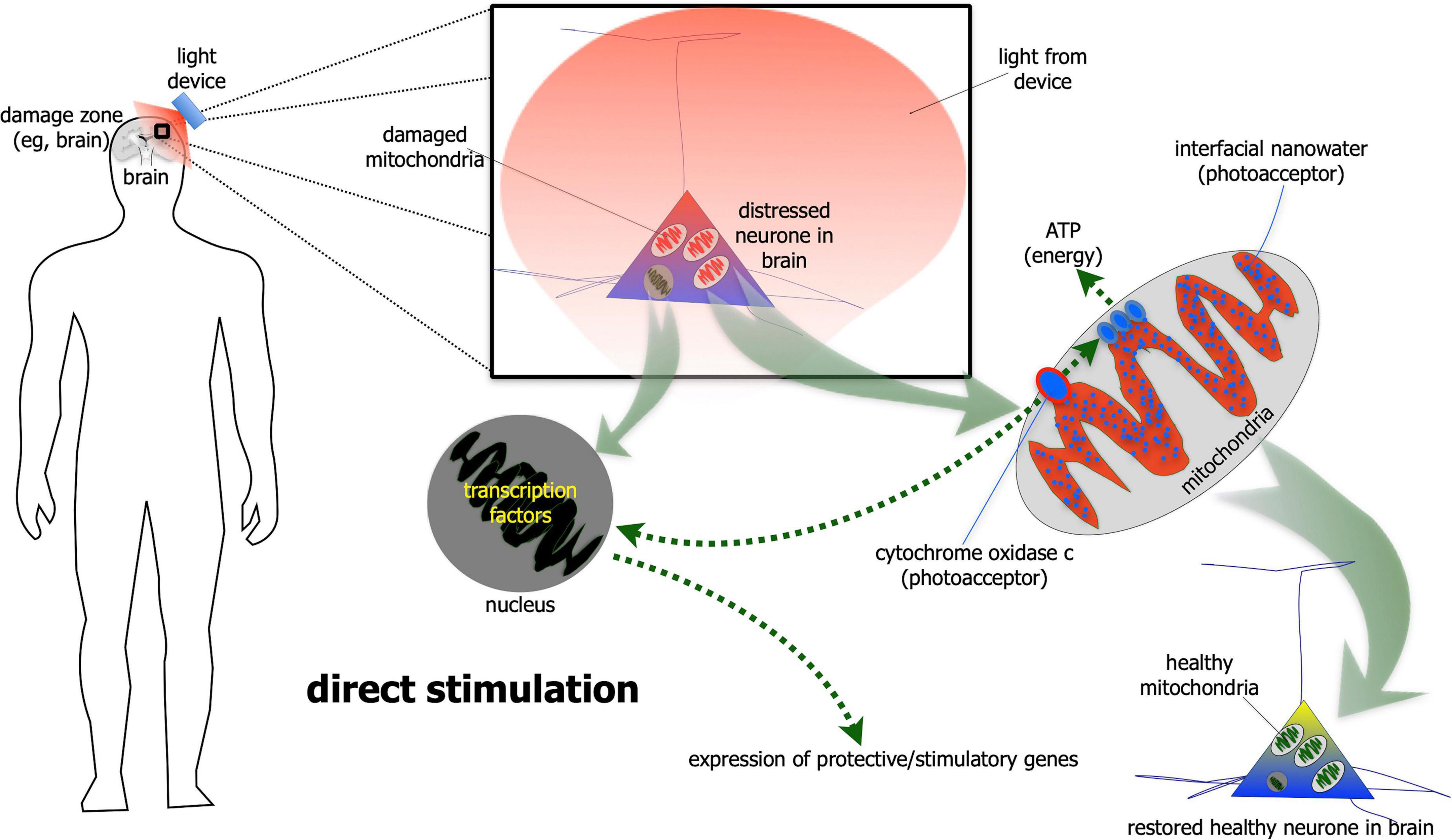Some Ideas on Photobiomodulation You Should Know
Wiki Article
The smart Trick of Photobiomodulation That Nobody is Discussing
Table of ContentsThe Only Guide for PhotobiomodulationAn Unbiased View of PhotobiomodulationSee This Report about PhotobiomodulationPhotobiomodulation Can Be Fun For Anyone
Laser therapy is a clinical treatment that utilizes focused light to boost a process called. During PBM, photons go into the tissue and interact with the cytochrome c complicated within mitochondria. This interaction causes a biological waterfall of occasions that causes an increase in mobile metabolic process, which can in addition to speed up the recovery process.There is consensus that the application of a healing dosage of light to impaired or useless tissue results in a cellular feedback moderated by mitochondrial mechanisms. Photobiomodulation. Studies have shown that these modifications can affect discomfort and swelling, along with, cells fixing
Modifications in ATP, responsive oxygen varieties and nitric oxide follow light absorption by Cc, O. These effects are redox state and dosage reliant.

Get This Report about Photobiomodulation
PBM tools have been cleared for marketing by FDA via the Premarket Notification/510( k) process as adjunctive tools for the temporary alleviation of pain. These clearances were based upon the discussion of clinical information to sustain such claims (Photobiomodulation). In this treatment, a light is positioned near or touching the skin, allowing the light power (photons) to penetrate cells where it connects with chromophores situated in cells resulting in photophysical and photochemical adjustments that result in changes at the molecular, mobile and cells levels of the bodySurprisingly, recent research shows that light can enhance performance in typical cells and cells. The prospective applications of PBMT are many and are being discovered experimentally at the basic scientific research, pre-clinical and clinical level. The present professional usages are for the relief of pain and inflammation and the therapy of sporting activities injuries.

The treatment specifications and number of sessions needed for PBMT are dependent upon place and reason. PBMT usually needs more than one therapy for optimum pain relief.
Some Of Photobiomodulation
Treatment parameters for PBMT were initially established making use of cells in vitro and in little pet designs. These therapy criteria additional info usually had a reduced irradiance and fluence and worked well for cutaneous applications. Nonetheless when clinicians started to utilize PBMT to deal with frameworks that lay much deeper in the body, they utilized these criteria with negative results.
We currently recognize that these negative research studies was because of wrong tool and therapy parameters for transcutaneous treatment of deeper structures. Recent breakthroughs in laser therapy devices and more research into the suitable does have actually drastically enhanced the outcomes of PBMT. For treating deep tissues, the wavelength of light made use of determines the depth of penetration into a tissue.
It is essential that a medical professional utilizes the ideal wavelength of light and criteria to treat a problem. One wavelength and one set of therapy criteria will not be reliable for all conditions. Adverse side effects have published here not been reported from the use of PBMT.
Get This Report about Photobiomodulation
In the first experiment, Dr. Endre Mester, made use of cut rats and observing exactly how the laser influenced their visit their website capacity to grow hair contrasted to the team that was not receiving LLLT. He discovered that the group of computer mice receiving LLLT were able to expand their hair back more rapidly than the team of computer mice that didn't receive LLLT (Hoon C, et al; 2012).This treatment is called in this manner to differentiate the difference between the lasers some occupations use to reduce (eg. in surgeries, or dental procedures). Low-level light treatment is painless, non-invasive treatment. It is used to decrease inflammation, swelling, and chronic joint problems, lower discomfort and increase injury healing of nerves and tissues (Hoon C, et al; 2012).
LLLT has a biphasic response, indicating that lower doses are normally attended be more valuable than greater doses. That being stated, doses higher or less than the optimal dose doesn't impact (Hoon C, et al; 2012). Therefore, it can be difficult to have research studies on LLLT with many criteria.
Some companies combined both (LED and laser) to give an extra all-round treatment because lasers can penetrate deeper than LED and infrared light (Norman Doidge, The Brain's Means of Healing, 2015). During therapy, the location that is being dealt with is subjected to LED light from a Bio, Flex Laser, which goes to 660 nm wavelength, followed by infrared light at 830-840 nm wavelength.
Report this wiki page